Review of I Am Cuba: Limited Edition Deluxe Box Set
Introduction
`I am Cuba` was filmed between 1963-4 to re-enact the origins of the revolution in Cuba that brought Fidel Castro to power in 1959. Following Batista`s ousting, the Bay of Pigs invasion and the Cuban Missile Crisis cemented the ties between Cuba and the Soviet Union, allowing Mikhail Kalatozov and his favourite cinematographer Sergei Urusevsky to work in Cuba with the full co-operation of Castro`s government.
In four vignettes, the film shows the worst of the Batista regime and the need for change: students are shot at, a farmer has his land sold from under his feet, US sailors leer at local girls and the people live in abject poverty. The propaganda film culminates with the guerrilla fighters from the Sierra Maestra mountains marching in victory, with Cuban flags held high. Each vignette is introduced by the `Voice of Cuba` (Raquel Revuelta) who poetically sets the scene, beginning each stanza with "Soy Cuba" to remind the viewer that, even though they are watching the plight of individuals, like Eisenstein`s early films, there is no hero and the plight is Cuba`s.
As the film had the official backing of the Cuban government, the filmmakers were given impressive resources: entire towns were available for filming; Che Guevara was apparently on set during the filming of the guerrilla fighters segment; Fidel Castro watched the rushes - but whether this was to advise or act as censor is unclear and 3,000 soldiers were provided for one section, despite the ongoing missile crisis.
A Soviet/Cuban co-production, `I am Cuba` was intended to please Russian and Cuban audiences together with their governments, but was almost universally hated because the Cubans didn`t like the Russian filmmaking style and felt they were being patronised, whereas the Russians didn`t like the poetic nature of the film and the almost sympathetic portrayal of the bourgeoisie. It was quickly shelved by the Soviet government and has only seen the light of day thanks to the efforts of Francis Ford Coppola and Martin Scorsese.

Video
A wonderfully remastered fullscreen transfer, with some breathtaking camera moves. The specially treated film gives the film heightened contrast, with deep blacks and bright foliage that looks almost silver.

Audio
A good PCM mono soundtrack, with clear Spanish dialogue and legible and well written optional English subtitles.
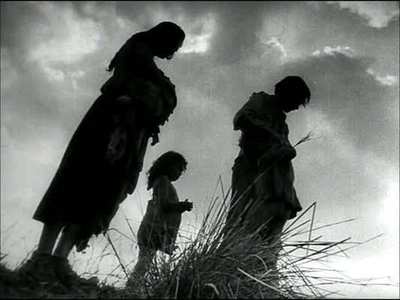
Features
The main bonus feature is the 90 minute `Siberian Mammoth` documentary, written and directed by Vicente Ferraz. Members of the cast and crew give their recollections of filming, how it was received and what they thought of it and their surprise at the film`s release on DVD. A fascinating and rewarding watch.
The 26 minutes interview with Martin Scorsese is fascinating as the maestro talks about how he first encountered the film, his appreciation of it and how it would have impacted on filmmaking had it been released in 1964.
There is also a brief picture gallery: a slideshow of photos and stills from the film.

Conclusion
It`s clear from the opening credits, where the camera flies over the breathtaking Cuban countryside before boating down a river, then cutting to a rooftop beauty contest, that you`re in for something special. In the continuous shot that follows - copied by Paul Thomas Anderson in `Boogie Nights` - the camera moves from the beauty contest, down the side of a building looking in on the different floors before joining sunbathers poolside, following a woman into the pool and then under the water as the music changes.
Another scene, which I watched with increasing levels of astonishment, starts on the street as a body is being carried by mourners, the camera ascends two stories to the top of a building, moves across to the neighbouring building and in through the window of a cigar factory, through the factory and out of the window at the other end before momentarily hovering then, incredibly, travelling down the middle of the street still two stories up, providing a bird`s eye view of the funeral procession.
The planning and execution of these two scenes by Mikhail Kalatozov and Sergei Urusevsky is stunning and they rank up there with the best I`ve ever seen.
This is a brilliant piece of formalist propaganda that is essential viewing for those interested in filmmaking. `I am Cuba` is a tremendous technical achievement and is, despite the content`s shortcomings, highly recommended.
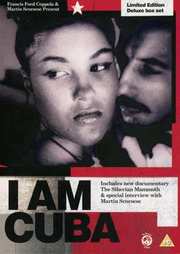
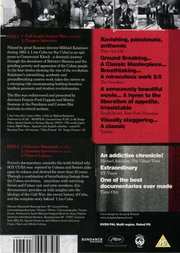
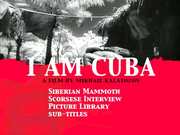
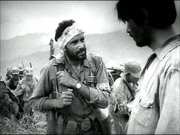

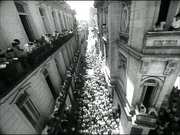
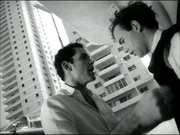
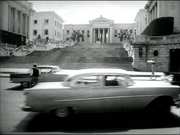
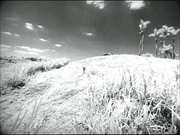
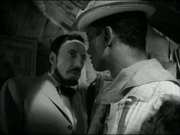
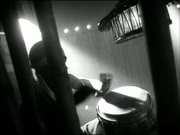
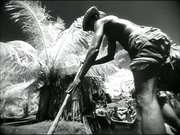
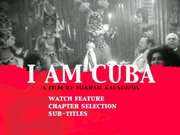
































Your Opinions and Comments
Be the first to post a comment!